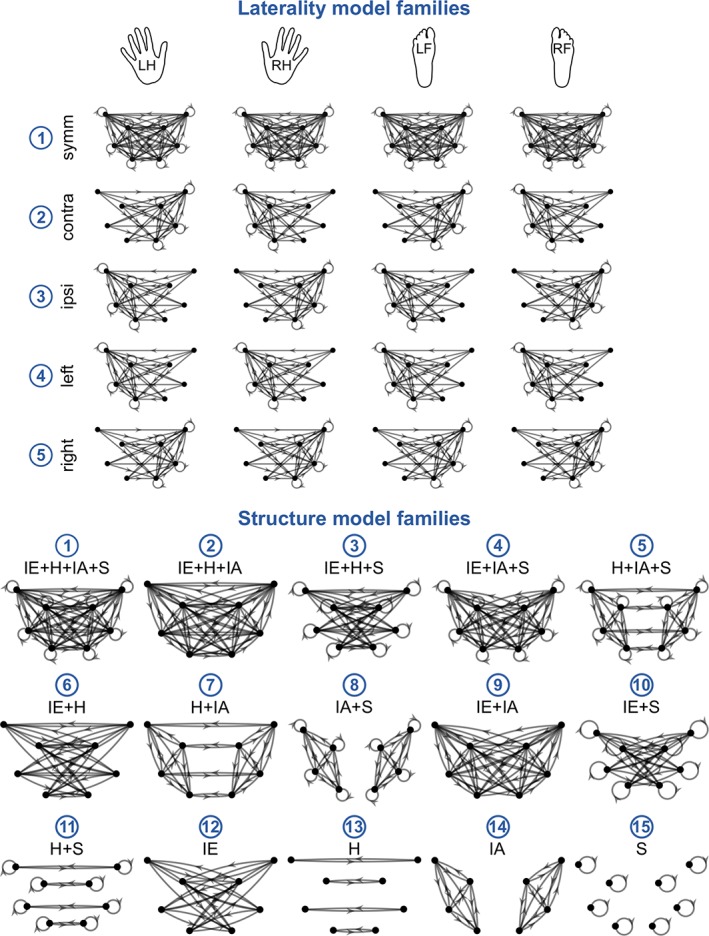Figure 4.

The architecture of models in the DCM model space could be described by two factors: laterality and structure, which were modeled by five laterality model families (top) and 15 structure model families (bottom). The two factors were fully crossed, yielding a total of 75 models. The DCM model space was designed to test hypotheses about the architecture of the DCM.B matrix of input‐modulatory connectivity for the four movement conditions: Left hand, right hand, left foot and right foot. We tested five laterality model families: (1) symmetrical, (2) contralaterally‐lateralized, (3) ipsilaterally‐lateralized, (4) left‐lateralized, and (5) right‐lateralized, and 15 structure model families, which varied according to the presence or absence of various types of connections: interhemispheric (IE), homotopic (H), intrahemispheric (IA), and self‐inhibitory (S) [Color figure can be viewed at http://wileyonlinelibrary.com]
